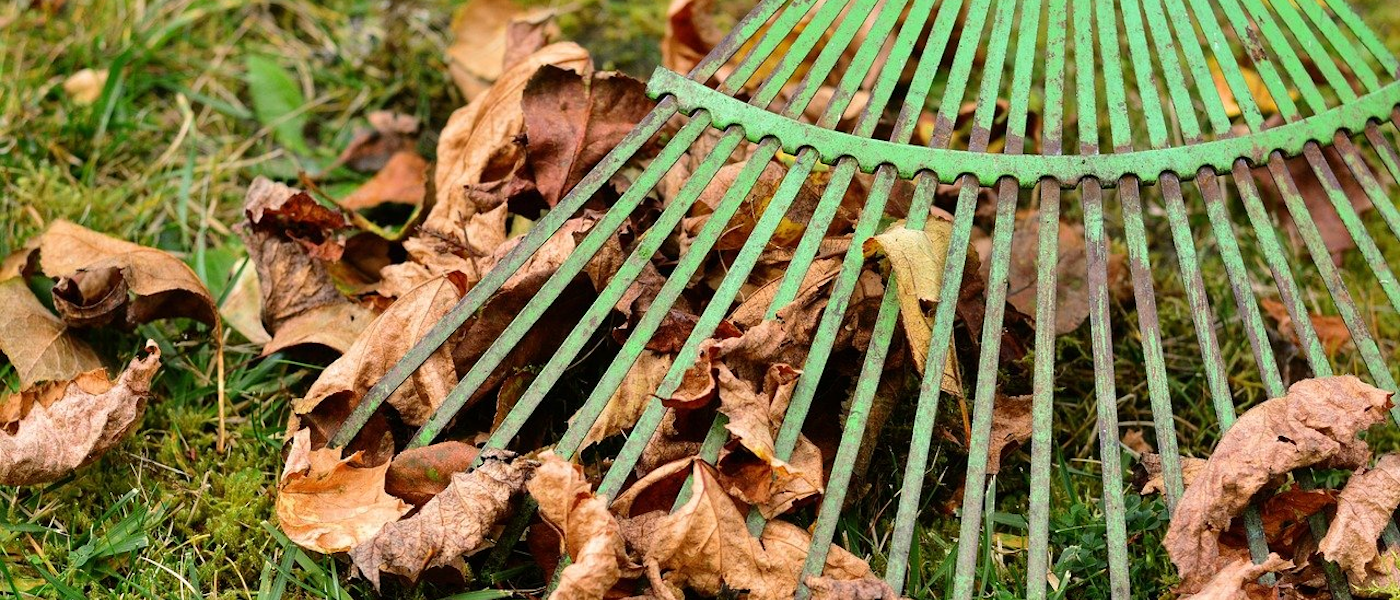Menu

Fall Cleanup Advice
What do I need to do for my garden in the fall ?
Over the last few years, the advice around this topic has changed considerably. We used to cleanup every last leaf, cut back all our plants, and make everything as tidy as possible. Whew, what a lot of work. Now we are beginning to understand that our gardens need to be a part of nature in order to thrive, and that our insects need our help. Now, the best advice is to clean up only as needed for the health of your plants. And, since most of our plants thrive perfectly happily in the wild with no help at all, that means minimal cleanup. But, there are a few tasks you should take care of in the fall.
Leaf Pickup
If you still have a lawn, don't allow leaves to sit on it. Instead, gently rake those leaves into your garden beds. That will allow any insects hiding in the leaves to survive, feed your soil as the leaves break down, and protect your soil over the winter. But, don't go overboard. You shouldn't bury the crowns of your sun loving perennials, especially those that prefer a dry environment. You don't want wet soggy leaves rotting those.
Fall soil feeding
Generally, your perennial garden beds shouldn't need much in terms of soil feeding. But, if you have large trees around, or you have been carefully cleaning up every fall, you may need to find a way to add more vegetative matter to your garden. In that case you can add compost to your garden. How to do that? Rake the leaves into your beds, and the worms and small creatures will take care of it by spring. Or, you can top dress with a centimeter of compost either in the fall or spring. That just means sprinkling it on top. I'm not a fan of digging anything into your beds, as I never understood the theory that you could help a plant by disturbing its roots.
Protect small shrubs and trees
No, you don't need to wrap up your plants in tight little burlap bundles. The purpose of that is to keep the salt from busy roads off of the plants. So, unless you live by a highway, you probably don't need to do that. If you have plants that are more tender, and in a windy site, you may want to erect a wind screen using poles and burlap. Make these strong, otherwise they'll likely blow over onto the plant you are actually trying to protect and break it.
Plants that need moving or dividing
Fall is a great time for moving or dividing plants. If you move them now, then in the spring they are most likely to wake up in their new home and forget all about the old one. Here are a couple of tips for fall planting. Make sure to 'plant them well'. Now is not the time to do a sloppy planting job, their roots need to be spread out in those holes, and the soil firmed well around them to avoid heaving over the winter. Make sure they are well watered going into winter. In the spring they will likely still have compromised roots from their move, and you don't want them to also be thirsty and unable to support new growth. Don't worry about the leaves. In the fall the leaves are naturally dying back and if they are already yellow, or spotted, you can just cut them off without any worries. The new ones will grow in the spring, and those old ones have already done their job for the season.
Feed the small birds
Many of our winged friend stick around all winter, and need lots of fuel to stay warm. An easy way to help them is to leave the seed heads on your plants. You will be rewarded with visits by birds throughout the winter. I remember watching a robin eating rose hips during an ice storm. I was so glad I hadn't chopped that down in the fall. Chickadees will eat the seeds from your goldenrod, and finches will cleanup up the cone flower buffet. Bonus, they are fun to watch. All you needed to do is stop dead heading.
What must you clean up?
You want to get all diseased plant matter out of your garden. Powdery mildew and other fungus survive winter as spores. So, you'd like to get those out of your garden. Also clean up anything you think will be too ugly through the winter. Personally, once grasses fall over or break I don't like the look of them. Sometime mid winter those tend to disappear from my garden. Fall can be a good time to tackle perennial weeds that just won't go away! That dog strangling vine at the back of your flowerbed, or that garlic mustard that will simply still be there in the spring if you don't eradicate it now!
Also, I do cleanup hostas. They get so yucky after the first few frosts, and I often find slugs hiding out in the center of them. If you can keep 1 slug from surviving winter, that's an entire extended slug family stopped from chomping on your hostas the next year.
What about in the shed?
Take a moment to clean, sharpen and oil your tools. You'll appreciate it next spring when your clippers cut cleanly.
Turn off your outdoor water, drain your hose. Connect the two ends together to keep it from dripping when you move it inside.
Sit back and relax.
Enjoy the view of your garden sleeping through the winter. Consider what you will do next season, and remember the joys your garden brought you this summer.
- Choosing a selection results in a full page refresh.

